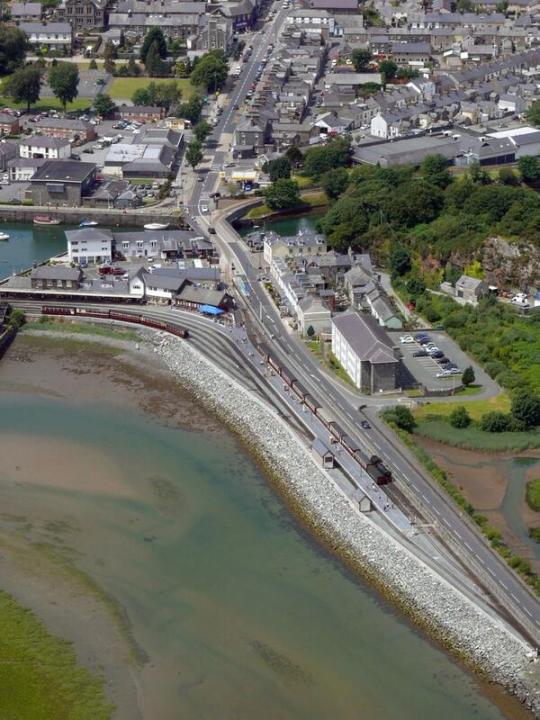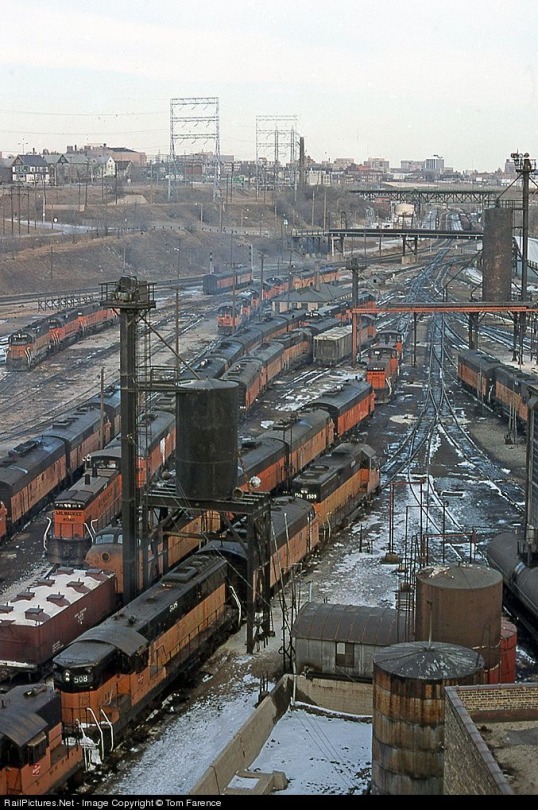#and train infrastructure
Explore tagged Tumblr posts
Text
my grandma asking what I've been up to and double-taking with shock when I say I've been going to a lot of protests.
my grandma wide-eyed in shock: "Wait- TO protests? Why on earth are you protesting??"
when I started to explain she said "Let's talk about something else."
like grandma, you would faint if you heard half the stuff i stand for these days
#being anti-authoritatianism and anti-abuse of executive power isn't even that radical#like heaven forbid she hear my opinions on universal healthcare#and wealth taxes#and greater ease of legal immigration#and non-religiously-motivated education reform#and train infrastructure#and clean energy#and environmental activism#and women's rights#and bodily autonomy#oh and the gay stuff <3#trans rights are human rights btw#anyway i visit those grandparents sometimes because it means a lot to my dad that i do#and i love my dad#so i visit them in small small SMALL doses once or twice a year but by god that still feels like too much sometimes
3 notes
·
View notes
Text

@amtrak-official mourns with us, I feel.
531 notes
·
View notes
Text

snow line
128 notes
·
View notes
Text


YAYYY LET'S RUN INTO TRAFFIC TOGETHER ✨️✨️✨️
#I CAN'T WAIT I feel like I'm the most autistic person about Vinyl City's infrastructure to exist#THE GLOW-UP? THE WAY THERE'S ACTUAL CARS AND TRAINS AND TRAMS AHHHHH#I'm going to be the most annoying NSR-pilled bitch in 2026.#I have a bunch of art piled up for the 5th anniversary in august already eeee#no straight roads#nsr#no straight roads 2#nsr 2#metronomik#a pango original
94 notes
·
View notes
Text
The federal government is "seriously" considering building the country's first high-speed rail link between Quebec City and Toronto, says Public Services and Procurement Minister Jean-Yves Duclos. Ottawa announced plans back in 2021 to build what it called a "high-frequency" (HFR) rail corridor with stops in Toronto, Peterborough, Ottawa, Montreal, Trois-Rivières, Laval and Quebec City. At the time, the government estimated the cost at between $6 billion and $12 billion. The federal government identified three qualified bidders for the project last year. A spokesperson for VIA HFR, the VIA Rail subsidiary set up to oversee the project, said the bidders have been asked to provide the government with two options: a "conventional" rail network with trains reaching speeds of 200 km/h, and a network with trains reaching speeds "comparable to those of European trains."
Continue Reading
Tagging: @newsfromstolenland
#trains#public transit#infrastructure#high speed train#toronto#quebec city#ontario#quebec#cdnpoli#canada#canadian politics#canadian news#canadian
195 notes
·
View notes
Text
yeah yeah yeah yachts and houseboats whatever the fuck blah blah blah . have you considered a houseTRAIN instead ???? it's like a houseboat, except you permanently live on a train as it wends its way through the world, so it's much much much cooler . in my ideal universe there are train tracks all over the place everywhere and soooooooo many little housetrain. can u imagine. it'd be so cool . friendship communal housetrain. family housetrain. okay this post has gotten away from me a bit the point is i REALLY REALLY REALLY want functional global rail systems to the point of overabundance
#trains#train posting#look. i have a lot of thoughts about infrastructure ok#meme#haha#funny#relatable#ugh girl whateva
58 notes
·
View notes
Text
Cars vs Accessible Worlds

Alright, let me talk about one thing in terms of accessibility in science fiction settings - and Solarpunk specifically - that also has more than one side to it: Cars and accessibility. Because it is more complicated than you'd thing.
See: The fact that our world is so car centric really, really hinders accessibility. Wide streets are a hindrance for even normal pedastrians, cyclists and so on. If I want to get from A to B, and the route crosses a street, and there is only a traffic light every like 500 meters, it means tat I usually need either to risk my life or take the long way around to get there. And that is a fucking bother even when you are healthy and can easily take that long way around. And the more car centric a society is, the worse the issue becomes. Here in Germany it is a lot easier still to cross a street than in many places in the US.
And of course this gets a lot worse if you are disabled. Be it that you just cannot walk that far. Or if you are blind and cannot even see in what direction you could go for the next traffic light. Or if you are hard of hearing or deaf, you might be more in danger of being surprised by a car. (And that is without going into how electric cars being so fucking quiet makes stuff even more dangerous.) And, you know, neurodivergent people might also just struggle with the fucking noise that is created by roads and is often inescapable in big cities.
And of course even outside of the environmental issues, the constant presence of cars is also a health risk. Not just because of the risk of accidents, but also due to the pollution and how it interacts. Even if we all were driving electric cars, there would still be all those microplastics created by tires and streets and stuff.
So, really. We do need to move away from car centric infrastructure to make our lives healthier and to make the world more accessible for disabled people too.
BUT...
But there is the issue that some disabled people still might be in need to use some sort of personal transportation device that can cover both short and large distances, because for one reason or another public transport just does not work and cannot work for them.
For example someone with severe anxiety issues, or someone who will be easily suffering from sensory overwhelm. There might be other issues, too. Just some folks will always need something like cars.
And of course there is also the fact that stuff like emergency services will still need streets accessible to cars. Because the emergency services will just not get around using something like cars to get to all the places they might be needed.
And this... makes things complicated. Because infrastructure should not be car centric, no. But it needs to be accessible by cars - and be it just for emergency services.
This is just something that I would love to see more talked about especially within the Solarpunk sphere.
#solarpunk#lunarpunk#infrastructure#car centric infrastructure#anti cars#mobility#public transport#accessibility#disability rights#disability#15 minute city#trains
189 notes
·
View notes
Text

Shiodome Station, Tokyo
42 notes
·
View notes
Text

The whole intent and dialogue around that statue in Times Square that pisses people off for being so radically average (Grounded in Stars) is so relevant to how I see Electra. Electric trains are just so invisible and never given serious media attention in the Anglosphere for how much they quietly keep society running and are genuinely superhero-tier stat-wise compared to any other trains (the environmental angle woefully undersells them they are OP in general).
Anyways, the more people go out of their way to make Electra anything but a regular electric train (which are SO rare in English-language fictional media) to villainize them, the more I make Electra a radically average fat middle aged commuter train with realistic “stuck in the 70s-80s” aesthetics. Because it makes you question everything and long for revisionist Train Wicked, because media misrepresenting and erasing electric trains for so long is such a silent but influential problem in the Anglosphere and has FASCINATING implications. The fact that people bend over backwards to praise steam engines for less than mediocrity but scream at electric trains for anything less than perfection (and ignore them otherwise) is telling and could be made so meaningful.
Anyways, flounce on New Jersey Transit Electra. Her hair is made of those coiled wires like on telephones. I may spin her into an OC because NJT is all electro-diesel bimodal engines and she really does feel like a midpoint between Electra and Greaseball lol
#stex#starlight express#my art#still would be competitive with Greaseball and track conditions are always an easy way to explain Nationals losing#quietly making even more radically average commuter train OCs because they have fun color schemes and important but ignored problems#like breaking in half or getting snagged on ridiculously antiquated catenaries#my dream production is just two hours of the Wiz subway scene with them Going Through It with surreal infrastructure problems#ft. showing mykal no context commuter trains and seeing what makeup designs he comes up with from vibes alone#i can go on for way too long about how the social/political/economical aspects of rail electrification is fascinating and influential#they’re only “boring” until you consider the bigger picture they’re a part of and how unintuitive yet important and understated it is#see: how long pantographs last despite the prolonged speed and friction and how they’re very durable for something that delicate and weird#there was an article of an electrical engineer talking about pantographs like the bee movie intro#“this defies all good engineering conventions and yet it is effective and enduring regardless”
38 notes
·
View notes
Text

51 notes
·
View notes
Text
Free online courses on Nature -Based Infrastructure
"Two training courses on making a case for and valuing Nature-Based Infrastructure. This training is free of charge.
Participants will learn how to:
Identify nature-based infrastructure (NBI) and its opportunities for climate adaptation and sustainable development.
Make the case for NBI by explaining its potential economic, environmental, and social benefits.
Understand the risk profile and the climate resilience benefits of NBI compared to grey infrastructure.
Explain the basics of systems thinking, quantitative models, spatial analysis, climate data and financial modelling applied to NBI.
Appreciate the results of integrated cost-benefit analyses for NBI.
Use case studies of NBI projects from across the world as context for their work.
This course was developed by the NBI Global Resource Centre to help policy-makers, infrastructure planners, researchers and investors understand, assess, and value nature-based infrastructure. The course familiarizes participants with several tools and modelling approaches for NBI, including Excel-based models, system dynamics, spatial analysis and financial modelling. In addition, the training presents a variety of NBI case studies from across the world.
Why do this course?
This course will help you gain valuable skills and insights which will enable you to:
Gain knowledge and tools for informed infrastructure decision-making, with a focus on advancing nature-based solutions for climate adaptation at a systems level.
Understand and measure the benefits, risks, and trade-offs of nature-based infrastructure.
Understand the importance of systemic thinking for infrastructure planning, implementation, and financing strategies.
Communicate persuasively and effectively with stakeholders to advocate for nature-based infrastructure.
Collaborate with peers around the world and become part of the NBI Global Resource Centre alumni.
39 notes
·
View notes
Text
the other thing about wanting to return US manufacturing to how it was in the 1950s is that a massive part of why our industry was able to really take off in the 1950s was basically no competition from europe or asia for a bit, on account of european and asian industries infrastructures and populations being utterly decimated by this little war you guys might have heard about. we certainly didn’t have zero competition (it’s not like we were the only country that wasn’t bombed to ashes for one) but we had a massive advantage for a few years
and that advantage was always going to be temporary because there has thankfully not been a global catastrophe anywhere near as devastating as ww2 since so rebuilding obviously happened
#obviously there’s more to it. there’s certainly a lot that can be pinned on reagan As Always lmao#but it is i think a key aspect of it#US manufacturing isn’t returning to how it was in the 1950s because:#1) global economy is just extremely interconnected now#2) lack of people trained in the trades#3) lack of infrastructure to do it#4) europe and asia are not reeling in the immediate aftermath of world war fucking two
28 notes
·
View notes
Text
After seeing @cosmos-dot-semicolon's poll on what the most sexually attractive type of transport is (trains, obviously), we here at Network Rail were inspired to ask the public their thoughts on the various pieces of railroad infrastructure. You see, at Network Rail, we are responsible for infrastructure rather than the actual vehicles, so we were wondering what part of the railway the public considers most sexually attractive. Let us know your thoughts on this, along with what makes that part of the railway more attractive than the others.
#network rail#network rail polls#we are not including the trains themselves because they aren't really infrastructure#and also they'd probably win easily so that's less interesting#if I forgot anything let me know. it won't change the poll but we'll know it exists at least#feel free to campaign for your favorite piece of infrastructure
37 notes
·
View notes
Text

marshalling yard
30 notes
·
View notes
Text
every time some smug yuropoor reblogs my post about Biblically Accurate Highways with some variation of "ummm haven't americans heard of ROUNDABOUTS?" i kill another hostage
#highway interchanges are not replaceable with roundabouts jesus fucking christ#car infrastructure is a nightmare and should be replaced with trains#but there are at least a dozen reasons that the spaghetti junctions make more sense than roundabouts in their specific context
75 notes
·
View notes
Text

#27.11.22#3185#the global train infrastructure in france is lame these days y'all#they closed down so many of the smaller country lines#half the time you gotta go up to paris and back down because that's just where everything goes.#massive lack of direct lines between other places#i dont even travel that much but man
288 notes
·
View notes